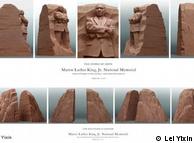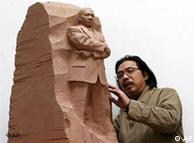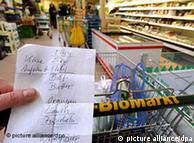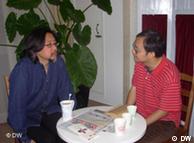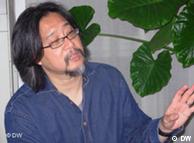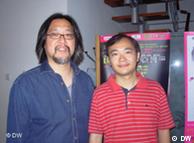Learning to Cook, With Time Left to See Paris
By NANCY R. NEWHOUSE
Published: August 22, 2007
SERIOUS cooks know they can go off to France and take immersion courses, but until recently, I hadn’t realized that it is possible to take quickie cooking classes: a few hours, a half day or a day.
mas·car·po·ne (mäs'kär-pō'nĕ, -pōn') 
n.
A fresh soft Italian cheese with a high butterfat content, made from cow's milk enriched with cream.
[Italian, augmentative of dialectal mascarpa, whey cheese.]
Skip to next paragraph 
Owen Franken for The New York Times
Making a mascarpone and fruit dessert at Ecole Lenotre in Paris.
Although I visit Paris often, my visits are short, and I assumed cooking classes would involve a major time commitment. In fact, it is easy to pop into a class, connect with Paris in a different way and, as a bonus, improve your French. (Usually, but not always, there is an English translator.)
The range of choice is so enormous that I decided to explore my options at three principal cooking schools in Paris: École Ritz Escoffier, École Lenôtre and Le Cordon Bleu. All three schools have well organized Web sites, particularly Lenôtre, where classes are given only in French. At Cordon Bleu, amateur classes are translated simultaneously into English, as are many demonstrations; at Ritz Escoffier, everything is translated.
How to choose? Among its spring classes, Cordon Bleu offered a Paris market tour, a class called “Cooking for Friends” and a seven-hour Saturday class on Easter chocolates, as well as its core daily demonstrations.
At Lenôtre, there were loads of temptations: “Grand Effet — Petit Prix” (“Impressive Meal at a Budget Price”), “All About Lamb,” “Flavors of Asia” and “Chocolate From A to Z.” Among Ritz Escoffier’s offerings were an evening cooking workshop in white and green asparagus and an all-day class on lamb.
In July and August, offerings at all three schools are limited. Signing up well ahead is essential, especially for popular classes. This doesn’t seem to apply to demonstration classes, which are larger and expandable.
A demonstration is just fun; a hands-on cooking class puts you right in the action.
My first venture was a demonstration class at the Ritz. There is an Alice in Wonderland quality to entering the back door on the Rue Cambon, descending the stairs and finding yourself underneath all that expensive elegance, in the bowels of the great Paris hotel.
In the spacious classroom and kitchen of the École Ritz Escoffier, I joined some two dozen others, including Americans, Japanese and a few Europeans. The chef, Christophe Pouy, in impeccable whites and pleated toque, was relaxed and charming yet a master of efficiency as he set in motion the menu of ravioli of duck foie gras with truffle cream, glazed pork ribs with lentils and chocolate mousse with candied orange.
From 3 to 5:30, he talked while he cooked, and a young Belgian sous-chef translated into English. She could even handle the occasional joke, if with utter seriousness. An overhead mirror reflected the chef’s moves, although it was easy to see without it.
We took notes on our printed recipes, especially on the little “trucs,” useful tips, the chef passed along: poach the ribs for a half hour or so, then marinate, before putting them in the oven; convert a plastic bag into a “poche,” a sort of pastry bag, to squeeze out dough or mousse; basics such as what to look for when buying foie gras.
In a few hours, everything came together in a symphonic close, and we tasted the various dishes and departed, crammed with information and energized — the chef had done all the work.
Shortly after the demonstration class at the Ritz, I was cooking. But it couldn’t have been more different than that laid-back affair. At the elegant Pavillon Élysée Lenôtre, on the Champs-Élysées, I was ushered into the bright, airy cooking area.
There, seven students (eight is the maximum) had their own chopping boards, knives, aprons and tea towels set up around a long central table, plus recipes and pencils. My heart sank as I realized the other six were all French women. How do you say “baptism by fire” in French? After the offer of coffee or water and a pain chocolat, the chef, Jacky Legras, didn’t stop for breath and neither did we.
As he said what he required — X amount of flour, X grams of butter, a minced onion, X egg yolks — each student would quickly take on a task. Ingredients were either in containers on the table, or in a refrigerator. Everyone seemed to know what to do. Mon Dieu! I started peeling potatoes, an easy job.
The chef was masterful at assessing students and giving harder jobs to the most experienced. Differing levels of expertise didn’t seem to matter, and in the flurry of work, along with frenzied note-taking, no one was keeping tabs on anyone else.
For our three-course Italian dinner, the menu was ambitious: gnocchi with Gorgonzola; mignons of veal with vegetable garnish and tuna sauce; and tiramisù. The chef would assemble the prepared ingredients, have pots going and ovens set, and show us, for example, how to beat the gnocchi dough to get the right texture. Eventually, we each had our own portion of dough to squeeze out of a tube and cut into pieces, our portion of veal to tie for roasting, and so on.
As we roared along, fine points of seasoning were covered along with myriad other details; my favorite was watching the chef deftly place paper-thin tomato skins on a cookie sheet with just a drop of olive oil on each and put them in the oven. A bit later, they emerged as stiff little “sails” to adorn the elegant vegetable garnish on the veal.
In three and a half hours, we never sat down or slowed down. And once again, the meal came out perfectly and on time; the food was divided by a helper into packages for us to take home. It was an intense learning experience, even if I grasped only about 85 percent of the rapid-fire French.
My next class was at Le Cordon Bleu, which is in its own building on a pleasant street in the 15th Arrondissement, less central and less glamorous than the other two. It is also less expensive, and the setting is spacious and comfortable. (Le Cordon Bleu, though Paris-based, is an international chain.)
The two-hour evening demonstration of “Chef’s Secrets” was led by Marc Chalopin, who cooked and talked us through the meal of scallop “parfait” with smoked herring eggs on cheese shortbread, sautéed pork medallions on puréed potato, and mushrooms with cream and potato crisps. We closed with some tastes and an excellent glass of cabernet franc from Saumur.
While somewhat frothy, the April cooking class on pear desserts at Lenôtre turned out to be fun: roast pears on hazelnut dacquoise with caramel ice cream; pear and ginger chutney and pear-raisin crumble. Since there were only five of us (again, French women and me) under the guidance of the chef, François Schmitt, and the menu was less daunting, this session felt fairly relaxed. Along with technique, I got to know ingredients like tant pour tant (half sugar and half almond powder), miel de sapin (fir-tree honey) and étoiles de badiane (star anise).
My final class, at Ritz Escoffier, was a half day on fish cookery, for which I had been squeezed into one segment of a week-long course (there was a spare place). This meant arriving early with the other students for school orientation and being issued full chef’s garb from the wardrobe department: toque, pants, white chef’s shirt, apron, tea cloth and a secure locker. In an hour, we were dressed and at work, preparing small mackerel marinated with herbs and cleaning the fish for a bouillabaisse.
This charming chef, David Goulaze, led our international bunch, including a Brazilian woman, a Korean girl as amateurish as I, a deft French woman studying for chefdom and a young Bosnian chef. It worked despite the huge variation in skills.
And when Mr. Goulaze personally tied the white chef’s scarf around each of our necks, I knew that a full week’s course — at least! — was in my future.
 Bildunterschrift: 雷宜锌的代表作《中秋》
Bildunterschrift: 雷宜锌的代表作《中秋》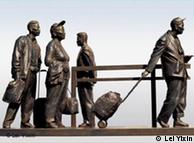 Bildunterschrift: Großansicht des Bildes mit der Bildunterschrift: 雷宜锌作品《出境》
Bildunterschrift: Großansicht des Bildes mit der Bildunterschrift: 雷宜锌作品《出境》